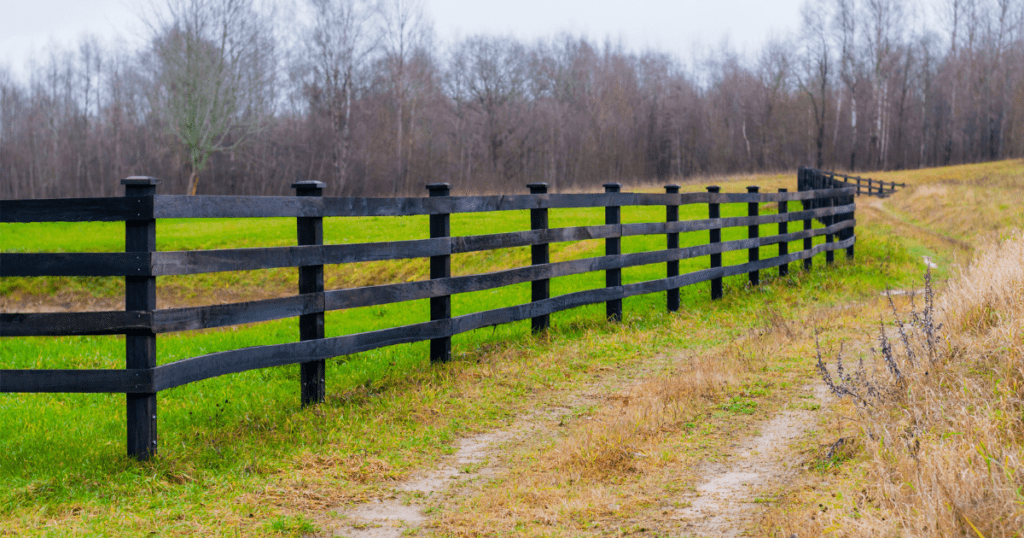How Limits and Boundaries Lead to Healthy Habits
Feeling like healthy habits are out of reach? Are you tired of slipping back into old ways, despite your best efforts? Well, don't throw in the towel just yet! Setting limits and boundaries are going to become your best friends.
Rag'n'Bone Man's "Old Habits" may be the anthem for your struggles, but setting healthy boundaries and personal limits can be the key to breaking free of failed goals.
A peek into the struggle with a look at some of the lyrics of “Old Habits”:
You’ve been drinking red wine like it’s water
Cocaine makes it hard for me to sleep
We should meet somewhere in the middle
Get some solid ground beneath our feet
Old habits die hard
And you could never give me up
‘Cause old habits die hard
(is that why wine is so popular 🤔)
(to do it all, we search for things to help 😞)
(fantastic idea 🙂)
(it’s called, knowing your limits 🤩)
(so true 😏)
(value your limits and boundaries, it’s possible 😎)
(you can learn NEW ways ☺️)
Sure the song is about a relationship. Guess what? Setting limits and boundaries is one of the best things you can do for your relationship with yourself. I often use love songs to help remind me to show more love to myself. Try it. It may change your world.
We've all been there – setting a goal to eat healthier, exercise more, or reduce stress, only to find ourselves slipping back into old habits a few weeks later. It can be frustrating to feel like you're constantly failing at self-improvement, but the truth is, maintaining healthy habits is hard for everyone. The good news is that understanding and defining your personal limits and boundaries can be a powerful tool in achieving and keeping healthy habits.
Old Habits Die Hard: How to Make Healthy Habits Stick
How do you stop feeling tired and overwhelmed?
Let go of the idea that you must do everything right to reach your healthy goals. Perfection doesn’t work, nor does an all or nothing mentality. Having unrealistic expectations will have you in burnout and feeling defeated.
It's time to release your "powering through at all cost" tendencies and define your personal limits and boundaries.

Break the Chain of Overcommitment: The role of limits vs. boundaries
To define the difference between limits and boundaries here is an example.
When it comes to healthy habits, setting personal standards and establishing your own comfort zone is like a GPS for your mind and body.
Limits are like your personal guidebook. They help you set realistic goals and determine what you can handle… you know, what you are capable of doing.
We all know that old habits die hard, and it's easy to get caught up in trying to do too much, be too much, and have too much. But overreaching can lead to burnout, resentment, and feelings of inadequacy. That's why setting clear boundaries and learning to say "no, I won’t do that" when necessary is crucial to maintaining healthy habits.
On the other hand, boundaries are like the guardrails on the road to health. They protect your time and energy, ensuring you stay on track and achieve your goals.
Understanding Your Limits
One of the biggest challenges when creating goals and planning your action steps for healthier habits is knowing what you're truly capable of. It's easy to overestimate your ability to make changes and stick to them. Feeling disappointed and discouraged because you couldn't follow through with your plan stinks. However, being honest about what you can handle and setting realistic goals that match your everyday life can reduce the likelihood of failure and increase your chances of success.
Respecting Your Boundaries
Another important aspect of successfully maintaining healthy habits is setting boundaries. We often put too much pressure on ourselves to do it all, be it all, and have it all. But trying to be everything to everyone can lead to burnout, resentment, and feelings of inadequacy. By setting clear boundaries and learning to say "no" when necessary, we can protect our time and energy, which is essential to maintaining healthy habits.
Yes, I am repeating myself. Being realistic with your abilities and being clear on what you won’t do will make taking action on your goals much easier and more enjoyable. In fact, at Balanced Healthstyles, we call limits and boundaries “Won'ts.”
“Won't” plays a significant role in keeping your expectations realistic and your actions doable.
Setting boundaries helps you prioritize your time and energy. When you know and respect what you are and are not willing to do, you can focus on the things that work for you. Accepting and, in some cases, even embracing the things you are unwilling to do can help you feel more in control and less burdened—rather than constantly pushing the limits of your willpower.
Stop the cycle of overreaching: The power of won't
By being honest with yourself about your limits, you can create a plan of action tailored to your unique needs.
For example: Meet Anna, a busy working mother of two who struggles with sticking to a regular sleep routine. She's always on the go, juggling her job as a marketing manager, her kids' extracurricular activities, and household chores. Yet, she's always felt that getting a full 8 hours of sleep is important yet impossible, making her feel guilty and inadequate.
Anna's always been determined to improve her sleep habits.
She's tried everything from counting sheep to drinking chamomile tea before bed, but nothing seems to work. She's tried setting a strict bedtime for herself, but she always stays up late, working on her laptop or catching up on her favorite TV shows.
One day, Anna realized she was approaching her sleep goal wrong. She was so focused on the idea that she had to get 8 hours of sleep every night that she was putting unnecessary pressure on herself. Trying to force herself to do something she didn't want to do was the root of the problem. She was white-knuckling her sleep habits.
Anna decided to take a different approach.
Instead of focusing on 8 hours, she decided to focus on her "won'ts." She wasn’t willing to give up working on her laptop to get a few extra work things done when the kids were in bed or watching TV before she went to bed. And she realized that when she worked on her laptop in the evening, it kept her mind racing with everything she needed to accomplish, and it wasn’t relaxing her and getting her in the mood for sleep.
With that realization, Anna made a few changes to her routine.
The computer was not putting her in a relaxed state. So she opted to write up her next day to do list before she clocked out of work duties and tuned into family time. She adjusted how she ended her workday so she didn’t have to open her computer in the evening. This created more space for her to unwind while watching tv, and she found herself calmer before bed. Anna also gave herself the freedom to handwrite a to do list in the evening if she needed to add more things. She also ditched the expectation that 8 hours of sleep needed to be the goal.
The Outcome
The changes worked wonders for Anna. She started sleeping better, and felt more rested in the morning. Knowing that she was in control of her sleep habits gave her a sense of relief and empowerment, and that she wasn't just trying to force herself to set a goal that caused her undue stress. She changed her evening computer/work habit and embraced wanting to watch evening tv. Her new sleep routine helped her to feel more balanced and successful with her sleep routine.
The importance of small steps
Taking small steps forward each and every day is the key to achieving your goals and living a healthy lifestyle. While it may seem slow (at times, it can feel incredibly slow), these small steps will accumulate to significant outcomes, like the old proverb suggests: Slow and steady wins the race.
To not get overwhelmed or start doing too much at once, stay focused on the small steps that will help you reach your goals slowly but surely. In addition, small steps can help you stay motivated throughout the process!
Saying No matters more than you think
Saying "no" to ourselves can be difficult, especially regarding things you're passionate about. To maintain healthy habits, they need to be based on reality. Know what you can handle (limits) and how to guide your time (boundaries) safely.
Dennis Felt Guilty about not getting enough steps
For example: Dennis used to feel guilty for not being able to walk 10,000 steps a day. He felt like he was failing at his health goal. But once he recognized that his won'ts included what he wasn’t capable of (because he couldn't walk that much due to a knee injury), he set a more realistic goal of 5,000 steps a day and found success. Dennis felt a lot less stressed and began enjoying his walks instead of beating himself up over not being able to walk 10,000 steps a day. Embracing his “won't” and not feeling guilty about it helped him feel good about his progress.
When setting boundaries and saying "no" to guilt, shame, and what others tell you you should be doing (or what you tell yourself), it's freeing. But be aware of triggers and stressors. There will be a lot of them. Valuing what you don't want will take practice and feel odd. You haven't ever been taught it is okay to not try for perfection when setting goals—identifying the things that cause you stress so that you can find ways to manage them and not let them suck you into the loophole of doing more than you are able. Stress can be a major barrier to maintaining healthy habits; finding ways to reduce it is beneficial.

Easy does it: Boundaries, not Burnout
Your time and energy are protected when you know your limits and learn to say "no," allowing you to set realistic goals and progress toward them gradually. Remember that taking care of yourself is an ongoing process that requires patience, self-compassion, and self-awareness.
So, how can you put this into practice?
One way is to start identifying your "won'ts." These are the things that you know you won't do, whether it's eating certain foods, engaging in certain activities, or spending time with certain people. By identifying your won'ts, you can establish your boundaries and be aware of your limits in a positive way.
Pam didn't have to give up her Oreos
Pam found herself in a challenging situation when she wanted to start eating healthier but wasn't willing to give up her beloved Oreos. She was relieved to discover that she didn't have to choose between eating more nutritious and having a personal love of Oreos.
Knowing it was necessary to honor her boundaries, she decided to make sure when she took her first bite of an Oreo, she savored the taste. She ate the Oreo slowly, enjoying and learning to be mindful of the complete Oreo experience. This helped her appreciate her favorite treat and eat less than she used to eat in the past. It was a given when she ate one Oreo it would lead to another and another, and well, you know how it goes.
The idea of eating slowly and mindfully and not having to give up Oreos reduced a lot of anxiety that surrounded the definitions that Panm had set for herself as to what eating healthy meant. It was no longer an all or nothing dilemma. It was a want, willing, won't success story.
Philip loves spending time with his partner
Philip used to feel so much remorse every morning after he would spend time with his spouse watching tv and snacking in the evenings, but he learned that it's okay to enjoy time with a loved one while still making healthy choices. He didn't want to stop enjoying his evening with his spouse and eating snacks, so he honored his "won't" while remaining in integrity to his primary goal of getting healthier.
Once he noticed it was more about spending time with his spouse rather than the snacks they ate, he was able to make a plan to watch his portions and plan a few healthier options for evening snacks. He was feeling so burned out about the whole process because every morning, he was walking around with so much remorse about what he had done the evening before. When Philip got real with his wants and honored his won't, he felt more motivated to look at healthier options. He took the restrictions off and found more freedom to explore how to create a balance that would leave him waking up smiling.
By defining your limits and setting boundaries, you can give yourself permission to focus on what you truly want and need to be healthy. Change is a process, and progress is not linear. By concentrating on your want, willing and won’ts, you can create a roadmap to healthier habits that are personalized, achievable, and realistic for you.
Knowing your limits is not just about understanding what you can't do; it's also about balancing the things you can do while taking care of yourself. This means striking a balance between pushing yourself to achieve your goals and prioritizing rest and recovery.
Setting limits and boundaries will help you achieve and maintain healthy habits. It allows you to be honest about your capabilities, set realistic expectations, and protect your time and energy. But it's important to remember that this process is not only about what you can't do. It's also about finding balance in what you can do.
The power of positive self-talk
Talk to yourself positively and remind yourself that progress takes time.
Be kind and compassionate with yourself, and remember that setbacks are a normal part of the process.
The Sweet Spot of Success
So ditch the thought that you must do everything perfectly and embrace the power of setting healthy boundaries by respecting your won’ts.
Remember, change takes time, and progress is not linear. But, by focusing on what truly matters, you'll be on your way to a happier and healthier you.
Learning to honor what works for you and what doesn’t takes time. It’s an ongoing process that requires patience, self-compassion, and self-awareness.
It's not about being perfect. It's about making progress. So, be kind to yourself and focus on the small steps and small wins.
Keep finding happiness one step at a time!
Ready to find out more?
Like this article? Would you like more? Sign up for our monthly newsletter and we will make sure you never miss an article.
Michelle Johnson Jerome is an expert on busting through perfectionism. She is passionate about helping others live life with purpose and joy. By drawing on her extensive experience as a nutrition coach, personal trainer, and yoga instructor she helps develop a realistic approach to goal setting that allows you to make progress and stop obsessing over mistakes.
Find other articles written by Michelle on her coach profile. Discover your "easy button": learn how to manage life's unpleasant parts so you can move forward, reach your goals, and live your best life.







It’s so easy to fall into the trap of over-commitment and unrealistic expectations, which can ultimately lead to burnout and feelings of defeat. I appreciate the reminder that it’s okay to say ‘no’ and prioritize our time and energy, and that small steps forward can add up to significant progress over time.
I especially loved the analogy of using limits and boundaries as a GPS for our minds and bodies. This post has inspired me to take a more realistic and compassionate approach to my own health goals, and I look forward to putting these tips into practice. Thank you!
I’m so glad it gave you that extra nudge. Creating health goals, or any goals for that matter, are often set with lofty expectations, and then we wonder why we fizzle out and fail on our goals.
I would love to hear more about how you use compassion within your health goals.
This weekend I was visiting my mom. She plays the piano for both the church service and the church choir. She is an excellent player, yet she has set some boundaries when she plays.
A quick glimpse into what she does –
She knows she can play anything, but the more challenging the music, the more she must practice. So she likes music that is not super difficult to play.
Why?
Because she created boundaries for herself, they look like this,
“I don’t want to put in a lot of time practicing. The harder the music, the more time I have to spend practicing. Therefore, I only commit to playing music within my “this is manageable” range rather than “this will require hours of extra time practicing.”
She demonstrated her limits and boundaries while I was visiting. For example, she was asked to play a piece of music that was a NO for her based on her boundaries criteria.
It was cool to witness. And the whole time, I thought, “Mom, did you read my article????”
Knowing your limits and boundaries frees you to pursue what is most important to you and leave what isn’t behind.
Again, so glad you found actionable reminders for yourself in this article. Thank you for reading and sharing your thoughts.